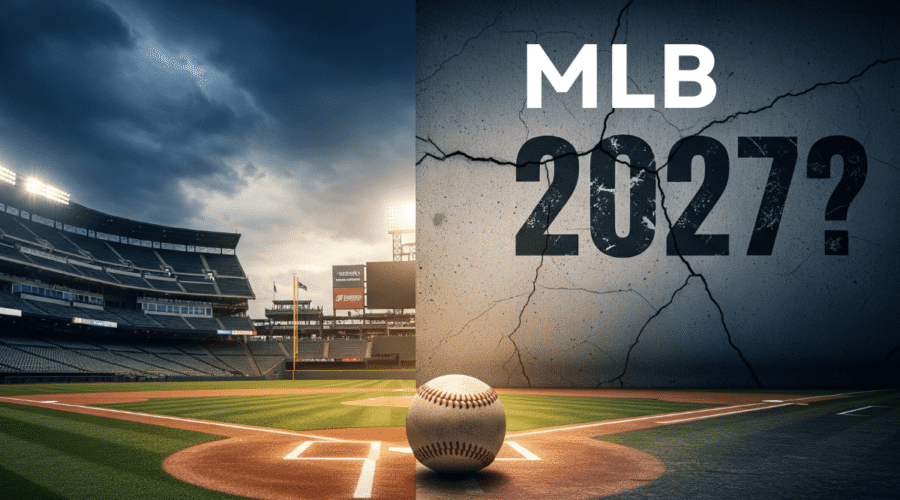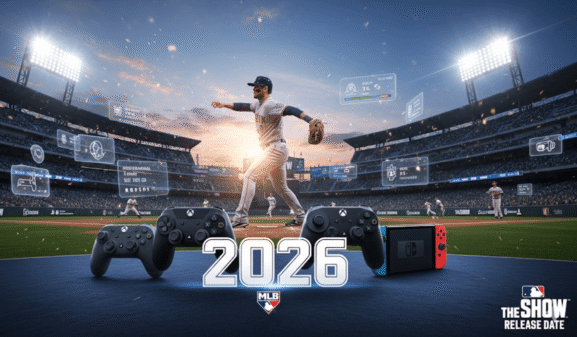Will There Be a 2027 MLB Season? Predictions and Rumors About Baseball’s Looming Labor Crisis
Baseball fans might want to savor every pitch, every home run, and every stolen base over the next two seasons. While we’re still enjoying the 2025 campaign and looking ahead to 2026, rumors about a brewing labor crisis are spreading throughout the sport. The collective bargaining agreement between MLB and the players expires on Dec. 1, 2026, and industry predictions suggest this could be the most contentious negotiation in baseball history.
The question isn’t just about contract negotiations anymore—it’s about whether we’ll have a 2027 season at all. If you think the sport’s next labor standoff is a ways away, you’re not listening to the executives who say it’s affecting today’s decisions. From front office strategic planning to free agent signings, the specter of a prolonged work stoppage is already reshaping how baseball operates.
Quick Takeaways
- MLB executives are already strategizing around a potential lost 2027 season due to CBA negotiations
- Owners are pushing for a salary cap while players remain firmly opposed to spending limits
- The current spending disparity ranges from $341 million (Dodgers) to $67.6 million (Marlins) in payrolls
- Free agent signings and team planning are being influenced by lockout possibilities 18 months in advance
- Former MLB executive David Samson guarantees owners will lock out players after December 2026
- The 2022 lockout delayed the season but cost zero games—the next one may be more severe
The Battle Lines Are Already Drawn
Unlike previous CBA negotiations that heated up months before expiration, this fight is starting early. Baseball executives aren’t just preparing for tough negotiations—they’re planning for what could be the longest work stoppage in MLB history based on persistent rumors circulating throughout front offices.
One anonymous general manager joked about circling December 2, 2026, on the calendar as the perfect time for a New Zealand vacation, knowing that once the lockout begins, no business can be conducted. Industry predictions suggest this won’t be a brief standoff like the 2022 lockout, but rather a prolonged battle that could extend well into the 2027 season.
This gallows humor masks a serious concern throughout the industry. “There is no scenario where at the end of December 2026, the players will not be locked out,” former Marlins president David Samson stated definitively, reflecting the pessimistic outlook many insiders share about reaching a peaceful resolution.
Why This Time Feels Different
The financial landscape of baseball has changed dramatically since the last CBA was negotiated. Star players are commanding unprecedented contracts—Shohei Ohtani’s $700 million deal with the Dodgers and Juan Soto’s $765 million contract with the Mets represent a new stratosphere of player compensation.
Commissioner Rob Manfred has been notably vocal about the need for “cost certainty, predictability and competitive balance mechanisms” similar to other major sports. While he avoids explicitly saying “salary cap,” the message is crystal clear. The spending gap between teams has reached levels that ownership finds unsustainable, with the Dodgers and Mets each spending over $330 million on players while teams like the Marlins and Athletics operate with payrolls under $80 million.
Read more: Will There Be an MLB Lockout in 2026? Predictions, Rumors, and Schedule Implications
The Strategic Impact on Team Building
The looming CBA expiration isn’t just a future concern—it’s actively influencing present-day decision making. Take Kyle Schwarber of the Philadelphia Phillies, who’s having another All-Star season with 30 home runs at the break. Normally, a player of his caliber approaching free agency would command a three or four-year deal worth significant money.
But front office executives are asking uncomfortable questions: How do you commit multiple years to a player who might not play during a lockout year? The back end of contracts are typically the worst value as players age, but what happens when that aging occurs during a season that might not exist?
These considerations are reshaping contract negotiations and free agent strategies across the league. Teams are becoming more cautious about long-term commitments, knowing that one of those seasons might be entirely wiped out by labor disputes.
The Players’ Perspective
The MLB Players Association has never accepted a salary cap and shows no signs of wavering now. Their position is straightforward: why should players accept artificial limits on their earning potential when the sport is generating record revenues? MLB reported record revenues of $12.1 billion for the 2024 season, up $500 million from 2023’s $11.6 billion.
The union views any salary cap proposal as an attempt to artificially suppress player salaries while owners continue to profit. They’ve successfully fought off cap proposals for decades and are preparing for what could be their biggest battle yet.
Read more: MLB Realignment 32 Teams : Rumors & schedule updates that could reshape MLB rivalries
What History Tells Us
Baseball’s labor history provides both hope and reason for concern. The devastating 1994 strike that canceled the World Series remains a cautionary tale about the destructive potential of prolonged work stoppages. More recently, the 2022 lockout delayed the season’s start but ultimately preserved all 162 games for each team.
However, insiders believe the upcoming negotiations will be different. The financial stakes are higher, the philosophical differences more entrenched, and both sides appear more willing to endure a lengthy standoff. Current prediction markets give a 55% chance that the 2027 season will be delayed due to CBA issues, reflecting the genuine uncertainty surrounding baseball’s immediate future.
The owners may feel they have more leverage this time, as they can better weather a prolonged shutdown than players approaching free agency who need both salary and service time. Meanwhile, players have shown remarkable solidarity in previous disputes and may be willing to sacrifice short-term income for long-term compensation freedom.
The Road Ahead
As we enjoy the current baseball season, the shadow of December 1, 2026, looms large over the sport. The stakes couldn’t be higher—not just for the financial future of baseball, but for the fans who have already endured too many work stoppages.
The next 16 months will be crucial for both sides to find common ground. Can MLB implement some form of spending controls without triggering a player revolt? Can the MLBPA accept any limitations on free market compensation? The answers to these questions will determine whether 2027 brings us another magical baseball season or another painful reminder of the business side of America’s pastime.
Baseball has survived strikes and lockouts before, but each one damages the sport’s relationship with its fans. As executives joke about New Zealand vacations and players prepare for battle, one thing is certain: the resolution of these negotiations will shape baseball for the next decade and beyond.
Frequently Asked Questions
Q: When does the current MLB collective bargaining agreement expire?
A: The current CBA expires on December 1, 2026, with most industry insiders expecting owners to immediately lock out players on that date.
Q: What is the main issue in the upcoming CBA negotiations?
A: The primary sticking point is ownership’s desire to implement a salary cap or similar spending controls, which the Players Association has historically opposed and continues to reject.
Q: Could the 2027 season be canceled entirely?
A: While complete cancellation is unlikely, significant delays or shortened seasons are possible if negotiations become prolonged, similar to the 1994 strike that wiped out the World Series.
Q: How are teams preparing for a potential lockout?
A: Front offices are already factoring potential work stoppages into contract negotiations and long-term planning, with some executives hesitant to offer multi-year deals that span the potential lockout period.
Q: What happened during the last MLB work stoppage?
A: The 2022 lockout lasted about three months and delayed the start of the season, but ultimately all 162 games were played after owners and players reached an agreement in March.


